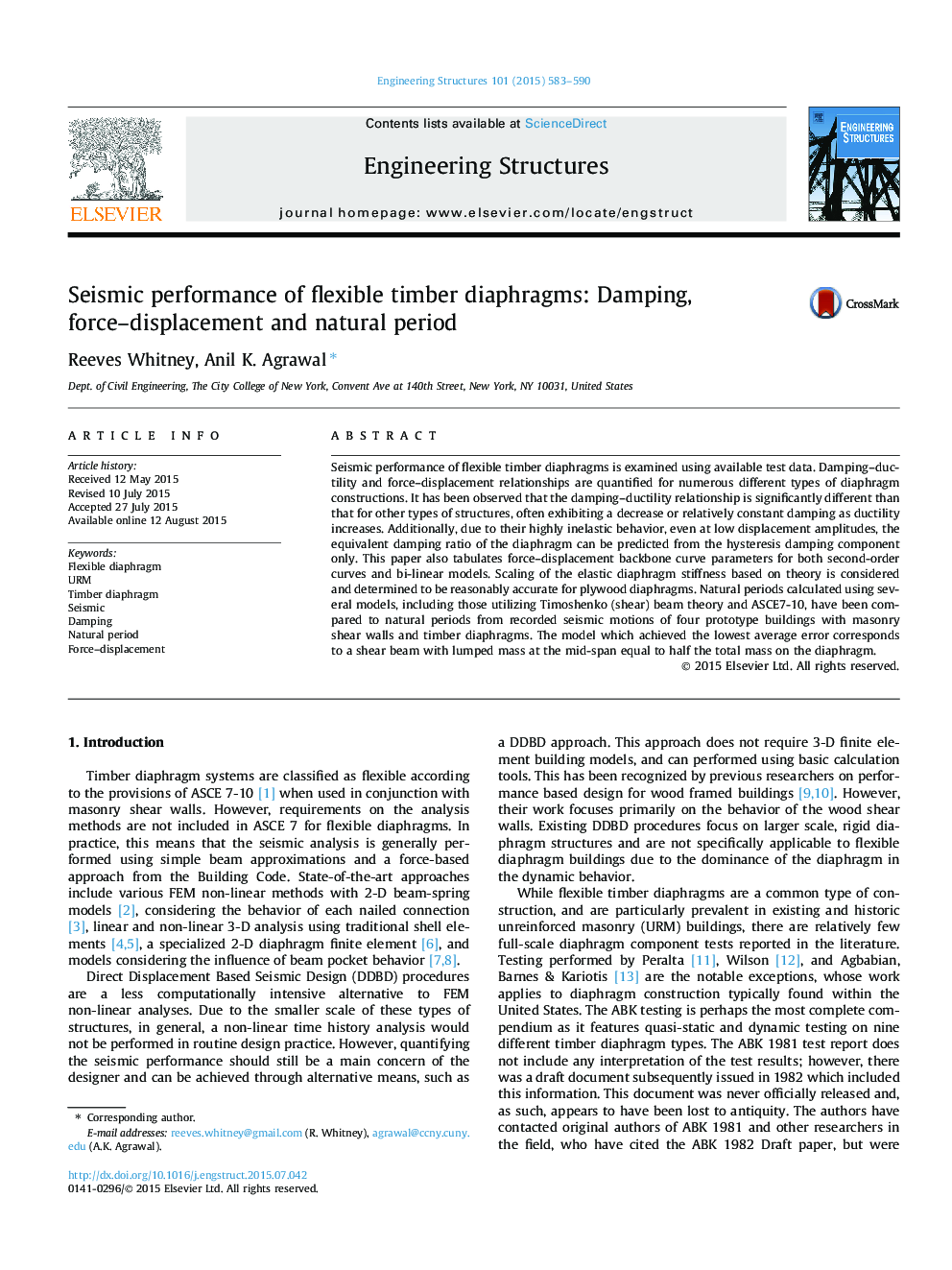| Article ID | Journal | Published Year | Pages | File Type |
|---|---|---|---|---|
| 266066 | Engineering Structures | 2015 | 8 Pages |
•Important parameters for analyzing timber diaphragms using DDBD is discussed.•F-Δ curves for both second-order curves and bi-linear models are detailed.•Natural period models are derived and compared with recorded data.•The damping-ductility relationship is in stark contrast to many structural systems.
Seismic performance of flexible timber diaphragms is examined using available test data. Damping–ductility and force–displacement relationships are quantified for numerous different types of diaphragm constructions. It has been observed that the damping–ductility relationship is significantly different than that for other types of structures, often exhibiting a decrease or relatively constant damping as ductility increases. Additionally, due to their highly inelastic behavior, even at low displacement amplitudes, the equivalent damping ratio of the diaphragm can be predicted from the hysteresis damping component only. This paper also tabulates force–displacement backbone curve parameters for both second-order curves and bi-linear models. Scaling of the elastic diaphragm stiffness based on theory is considered and determined to be reasonably accurate for plywood diaphragms. Natural periods calculated using several models, including those utilizing Timoshenko (shear) beam theory and ASCE7-10, have been compared to natural periods from recorded seismic motions of four prototype buildings with masonry shear walls and timber diaphragms. The model which achieved the lowest average error corresponds to a shear beam with lumped mass at the mid-span equal to half the total mass on the diaphragm.
